Last updated on September 18th, 2024 at 10:06 am
Riomax Shines When the Pens Get Muddy
Even when it’s green, orange is still a good option
Nathan Blessum
Blessum Ranch
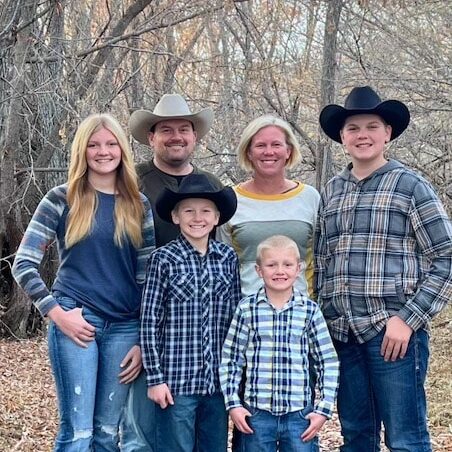
Rugby, North Dakota
Nathan Blessum was in a good mood when he paused to talk farming, ranching, and Riomax. For good reason. “We’re green and it’s raining, so I’m happy, happy, happy.”
Blessum along with his wife Elizabeth and their four children farm and ranch around the town of Rugby in north central North Dakota. It’s northern prairie with rich farmland and plenty of sloughs and potholes. In addition to raising a variety of crops including corn, canola, wheat, edible beans, soybeans, oats, rye, and winter wheat, they run around 500 commercial Angus-based cows. Besides their commercial crops, they grow alfalfa, millet, and other forage crops for winter feed.
Calving begins the middle of April and the calves stay on the cow until early January, when they’re weaned. “We calve in 15-acre dry lots and group the cows in groups of 100 to 150,” he says. “It’s not an ideal situation, but we’re more farming than we are cattle, so we don’t have nice, dry pastures close by to calve on.”
And it becomes even less than ideal when it rains. Which it does. “We were terribly dry all winter and had a wet spring. When the cows were in the dry lot, I think we had about 6.5 inches of moisture all in about a month. It would get muddy and sloppy for a couple of days until it would dry back up before it rained the next time. This year’s calving season was ideal for scours; and I credit Rio for keeping the calves healthy.”
Because most of their land is farmed, summer grazing for the cows and calves is whatever country is left over that they can’t sink a plow into. That means sloughs and potholes and the cattle do the best they can on rough feed and rough ground.
After harvest, the pairs move to the farmland, where they graze corn stalks, wheat stubble, and other crop aftermath. “I’m trying to keep it cheap and cost-effective instead of having to bale (as much feed). We have a long winter up here and most guys start feeding November 1 and they feed until June 1. With no snow, I can make January no problem with corn stalks and maybe even longer.”
Even if it does snow, he has options. He cuts wheat with a stripper head, which leaves most of the stalk behind. So if it does snow, there is enough of the stalk that pokes through to provide grazing. The pairs stay on crop residue until weaning.
“I always want to get them to December, no matter what,” Blessum says, “then let the weather dictate if I need to wean them or not.”
Calves are weaned in a dry lot and after about 10 days, they’re kicked out in a 50-acre field, where they’re backgrounded anywhere from 45 to 80 days, depending on the market. There, they’re fed a ration of baleage, ground or cracked corn, and prairie grass hay.
Riomax Makes NHTC Easy
Blessum has been producing and marketing NHTC (non-hormone-treated cattle) the past few years, and Riomax has become an integral part of that, he says.
They started on Rio the spring of 2023 when his dad was picking up supplies. His dad had extra room on the trailer and the owner of Little Missouri Ranch Supply in Bowman, North Dakota, threw on eight orange Riomax tubs.
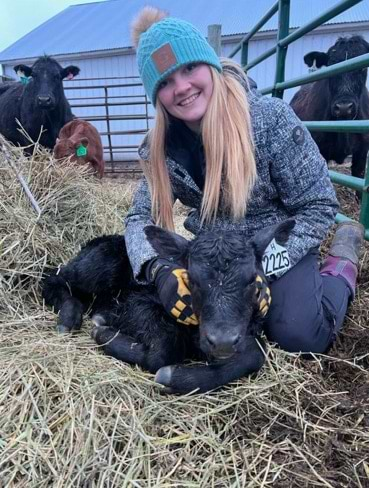
“Dad said give this stuff a try and see what I think, so I threw it out in the calving lots,” Blessum says. “I felt like the cows were getting sufficient mineral and they shouldn’t eat these orange tubs. After I threw them out, they just started eating and eating and eating and eating. They ate me out of house and home for about the first three weeks.”
He called the store and told them what was happening. The store owner said don’t worry, Riomax has a consumption guarantee. He told Blessum to keep the cows on Riomax and see what happens.
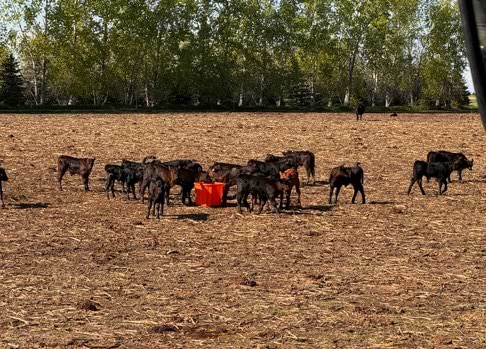
“Pretty soon, they started backing off on it. As the whole year went last year, they ate 0.15 pound a head, so they were well under the max.”
The result? Blessum couldn’t be more pleased.
Calving season should have been a wreck, given the conditions in the dry lots. “We didn’t have to treat anything with an antibiotic. Absolutely nothing,” he says.
The mama cows are fed a TMR ration while in the lots with the orange Riomax tubs nearby. And when the feed wagon rolls past, the cows naturally head for the feed bunks. “Then you’ll have a group of 15, 20 calves that run around and play. They’ll stop at the orange tubs and start licking.”
Going All Natural
Prior to going with Riomax all year around with all his cattle, Blessum was feeding a medicated liquid protein-mineral supplement in the winter feeding ration. His calves had qualified for NHTC while on the liquid supplement. When he went with Rio, he was able to now market his calves as NHTC and all-natural. He was nervous about going all-natural in the beginning in case of an outbreak in the calves like scours, coccidiosis and pneumonia. “I’ve had absolutely zero issues.”
Beyond calf health, he’s pleased with the saving he sees on feed. Even though he extends his grazing season longer than his neighbors, winter feeding is still necessary, along with feeding the cows during calving season.
“I know that my bales weigh 1,450 pounds.” This spring, he used a large, square feeder with a group of later-calving cows. “I can put eight bales in this feeder. The cows, over a 2 to 2 1/2-week period, averaged 23 pounds of hay a day.”
The cows are medium-framed, weighing around 1,200 pounds. “I’m no scientist, but I would think that they would be at 30-33 pounds minimum, he says. “Thirty-three is what I’ve always thought in my head. If you figure the math, that’s a pretty big dollar savings on feed.”
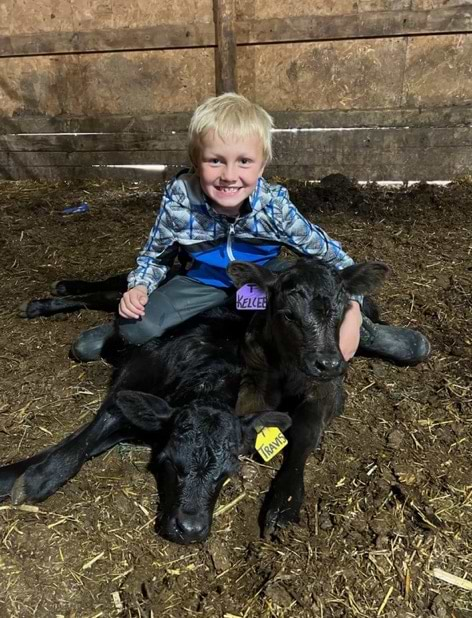
Then there’s the cattle health. “I said I’m going to wait a year and decide if I’m truly sold on this stuff. We are currently 15 months in and I would recommend this product to anyone,” he says.
“Before starting Rio, we would doctor five to 10 calves each spring for scours. Last year, even after being on Rio for only two months, we doctored one calf. This year, we didn’t have to doctor any. Now I’m not saying we didn’t see any signs of slight secours around, but what I am saying is that the calves were healthy enough and their rumens in good enough shape that we didn’t have to doctor any of them and they got over it quickly. And like I said previously, with the wet spring and muddy calving conditions that we had this year, we should have had to doctor calves and we just didn’t have to this year.”

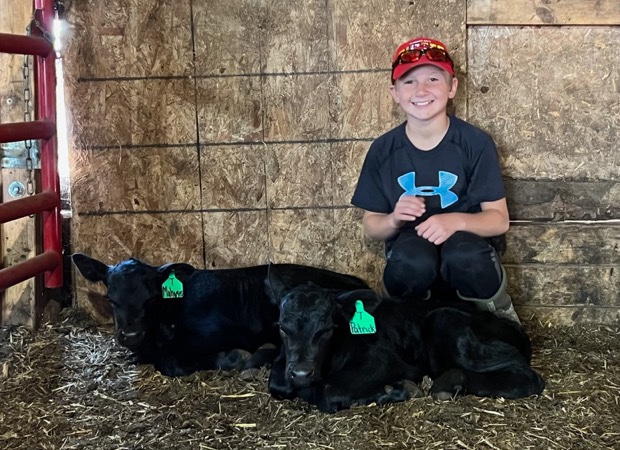
For an operation trying to run cows as low-cost as possible, writing the Riomax check can cause a hard swallow, Blessum admits. But he’s found the orange tubs are an input that makes him money.
“You’ve got to look at what it does for you, the cost savings on the back end,” he says. “The upfront cost is expensive, but when you pencil out the actual consumption rate of the mineral, your herd health (cows and calves) and the feed savings, Rio mineral is worth the money and is paying for itself without any additional work on our end. Put the tubs out and let them do their job.”



